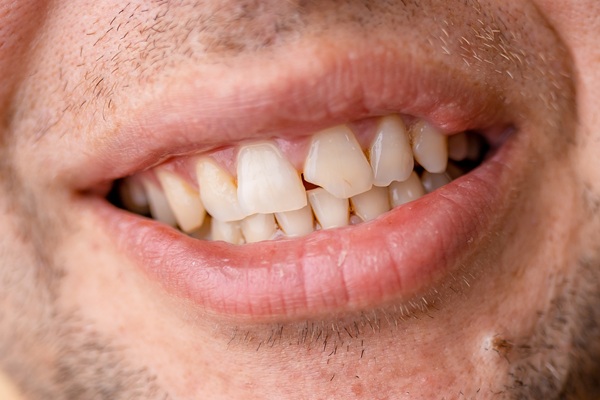What Are Common Endodontic Treatments?

Your dentist may recommend endodontic treatments if you have a damaged or diseased tooth. Inside each tooth is a soft, threadlike substance called the pulp. It is the living part of your tooth. The pulp contains the connective tissues, blood vessels, and nerves that bring required nutrients to the tooth and keep it healthy.
When the pulp becomes infected or inflamed, you usually need a special procedure to repair the problem.
Why you may need endodontic treatments
Damage to the pulp can happen for many reasons, including:
- A crack or chip in the tooth
- A defective crown
- Deep tooth decay
- Repeated dental procedures on a tooth
- Injury
A tooth injury can cause damage deep inside, even if you do not have a visible chip or crack. If pulp infection or inflammation is left untreated, you may experience pain, and the tooth may become abscessed, meaning the area becomes infected and fills with pus.
Most of the time, endodontic treatments can save a tooth. Keeping your natural tooth whenever possible is advantageous. It is because the lengthy roots of your teeth keep them anchored in place. The roots help preserve the natural structure of your jawbone and mouth by stimulating the jaw when you chew. Maintaining your natural teeth can also save you money and trouble in the long run, helping you to avoid further dental work.
Types of endodontic treatments
There are several treatment options if you have problems with your tooth pulp.
Root canal
The type of endodontic treatment you are probably familiar with is a root canal. During this procedure, the dental professional opens the tooth, either through the back of a front tooth or in the crown of a pre-molar or molar. Then the dentist performs a pulpectomy, removing the injured pulp. The dentist also removes the nerve from inside the tooth.
The next step is cleaning the pulp chamber and inside the tooth, shaping and enlarging the area. The dental professional may treat the tooth with medicine to kill germs. After the space is cleaned and reshaped, the dentist fills it with a material to prevent further infection.
A second visit is needed to complete the root canal procedure in some cases. If so, the dentist places a temporary filling on the tooth to protect the area between visits.
At the next visit, the dentist removes the temporary filling. Then a rubbery substance called gutta-percha is inserted into the canal and cemented in place. The dental professional adds a crown or permanent filling in the next step.
Endodontic retreatment
In many cases, endodontic treatments last many years or a lifetime. However, it is possible for the tooth to heal improperly. This situation can happen months or years after treatment. Endodontic retreatment gives your tooth a second chance.
A tooth can fail to heal properly for a few reasons:
- Complex canal anatomy
- Delayed placement of the permanent crown or filling
- Narrow or curved canals that were left untreated
- Unblocked salivary contamination
- New decay
- New tooth injury
- Damaged crown
During endodontic retreatment, the dental professional reopens the tooth and removes the filling materials from the initial procedure. The dentist looks for new decay or previously untreated canals. The next step is removing any infection before cleaning and reshaping the area. The dental professional fills the canal with the new filling material and adds a temporary filling until it is time for a new crown or permanent filling.
Dental implants
When you have an injured tooth, the primary goal is to save it. However, sometimes the tooth is so severely decayed or damaged that it is impossible to keep it.
Dental implants are sometimes an option if the tooth must be removed. According to the American Dental Association, the development and use of dental implants have improved significantly over the past 40 years.
The first step is to put the implant into the jawbone. The post is a titanium alloy that is compatible with the human body. The area heals as the bone grows around the implant. Sometimes, the healing stage can take several months. A custom crown is placed on the post when the area is ready.
Conclusion
Once you have restored your oral health with an endodontic procedure, you must keep a regular care routine. Brush your teeth twice a day. Use a water flosser or dental floss daily to remove food and plaque between the teeth. Visit your dentist regularly so that you can have the restored area and the rest of your mouth examined for future issues. With proper care, your endodontic treatments can last a lifetime.
Request an appointment here: https://www.lilburnfamilydentistry.com or call Lilburn Family Dentistry at (770) 800-0178 for an appointment in our Lilburn office.
Check out what others are saying about our dental services on Yelp: Endodontic in Lilburn, GA.
Recent Posts
Dental crowns are restorations that can address a range of dental issues, from severely damaged teeth to protecting a tooth after a root canal. They help preserve oral health and enhance a smile's appearance. In addition to being versatile, they are available in different materials, which can be helpful for individuals who want options.Dental crowns…
A broken tooth is a common dental issue that can happen for many reasons, such as accidents, biting into something hard, or untreated tooth decay. Whether a dentist can save a broken tooth or needs to remove it depends on how severe the damage is and how quickly patients seek treatment. While modern dental techniques…
Dental crowns are a popular dental restoration, effectively preserving and enhancing the function of damaged or weakened teeth. These custom-made caps are designed to fit over the existing tooth, providing both structural support and improvements in your smile's appearance. However, not all dental crowns are created equal. The type of dental crown you choose can…
Your dentist can help determine if you need dental crowns. There are many reasons for getting these restorations. The main goal is always to restore the tooth and enhance its functions. Here are the signs you may need dental crowns soon.Losing at least one tooth can cause more dental problems. It can lead to dental…


